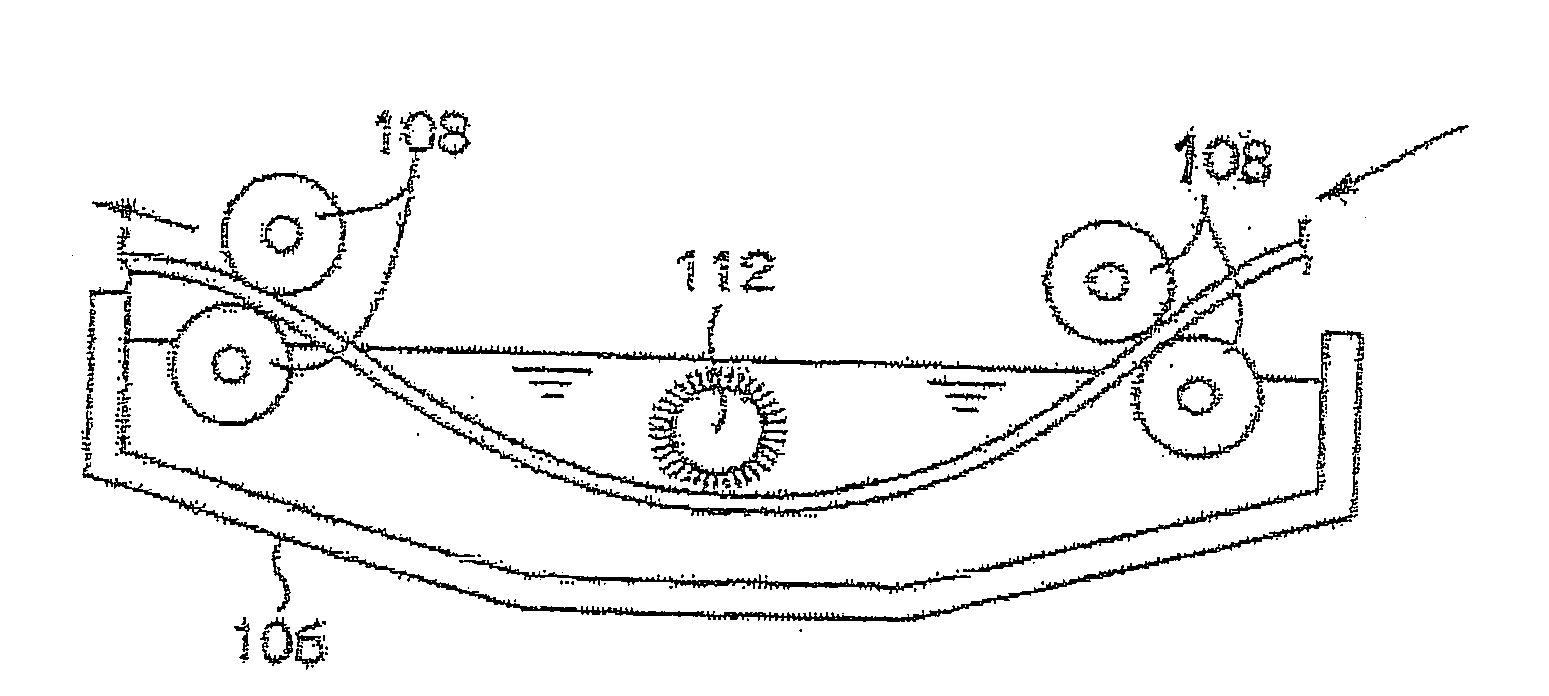Platemaking method for lithographic printing plate precursor and planographic printing method
a lithographic printing plate and precursor technology, applied in the field of platemaking methods for lithographic printing plates and planographic printing methods, can solve the problems of insufficient development or printing run length, insufficient printing run length, and extremely weak image strength, so as to improve the development property, improve the inking property, and improve the developability.
- Summary
- Abstract
- Description
- Claims
- Application Information
AI Technical Summary
Benefits of technology
Problems solved by technology
Method used
Image
Examples
examples
[0260]In the following, the present invention will be clarified in more details by examples thereof, but the present invention is not limited by such examples.
[0261][Preparation of Substrate]
[0262]
[0263]An aluminum plate of a thickness of 0.3 mm (grade 1050) was at first subjected to a degreasing with a 10% aqueous solution of sodium aluminate for 30 seconds at 50° C. in order to remove the rolling oil on the surface, then subjected to a graining of aluminum surface, utilizing three nylon brushes with bundles of a fiber of a radius of 0.3 mm and an aqueous suspension (specific gravity of 1.1 g / cm3) of pumice of a median diameter of 25 μm, and rinsed well with water. The plate was etched by immersing in a 25 mass % aqueous solution of sodium hydroxide of 45° C. for 9 seconds, and, after rinsing with water, immersed in a 20 mass % nitric acid for 20 seconds at 60° C. and rinsed with water. An etching amount of the grained surface as about 3 g / cm2.
[0264]Then a continuous electrochemica...
PUM
| Property | Measurement | Unit |
|---|---|---|
| wavelength | aaaaa | aaaaa |
| wavelength | aaaaa | aaaaa |
| mass % | aaaaa | aaaaa |
Abstract
Description
Claims
Application Information
 Login to View More
Login to View More - R&D
- Intellectual Property
- Life Sciences
- Materials
- Tech Scout
- Unparalleled Data Quality
- Higher Quality Content
- 60% Fewer Hallucinations
Browse by: Latest US Patents, China's latest patents, Technical Efficacy Thesaurus, Application Domain, Technology Topic, Popular Technical Reports.
© 2025 PatSnap. All rights reserved.Legal|Privacy policy|Modern Slavery Act Transparency Statement|Sitemap|About US| Contact US: help@patsnap.com



